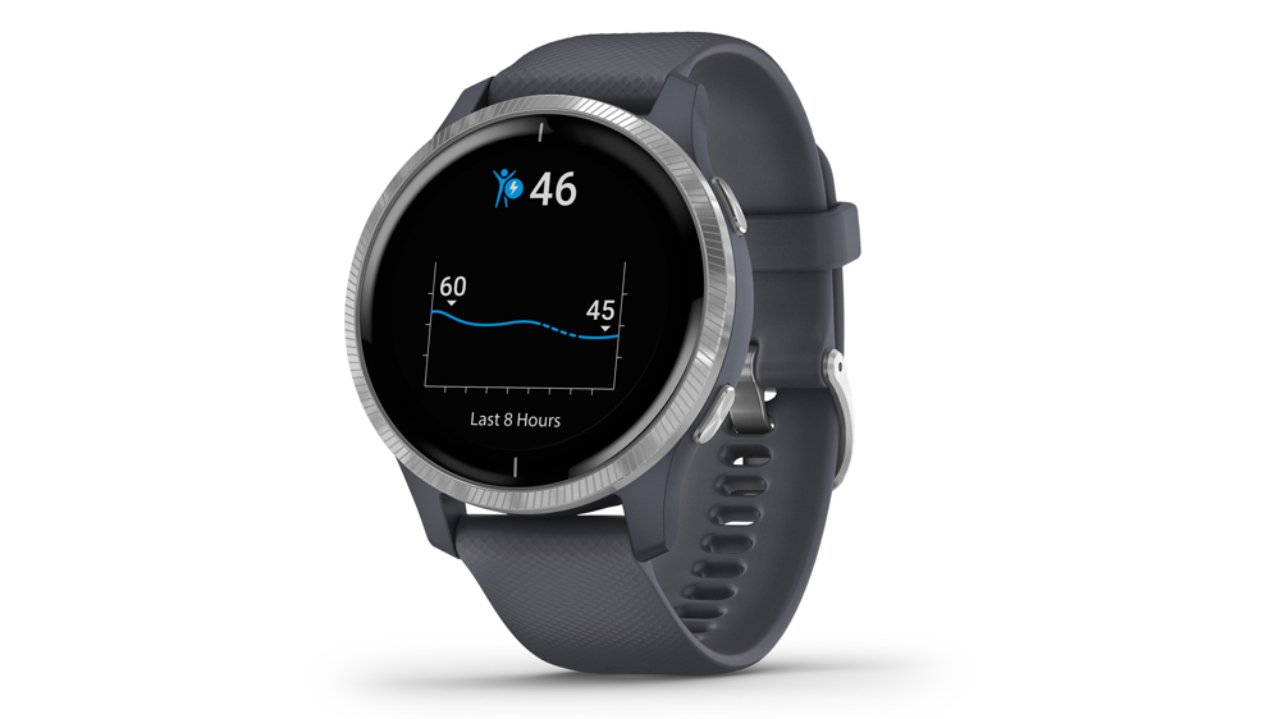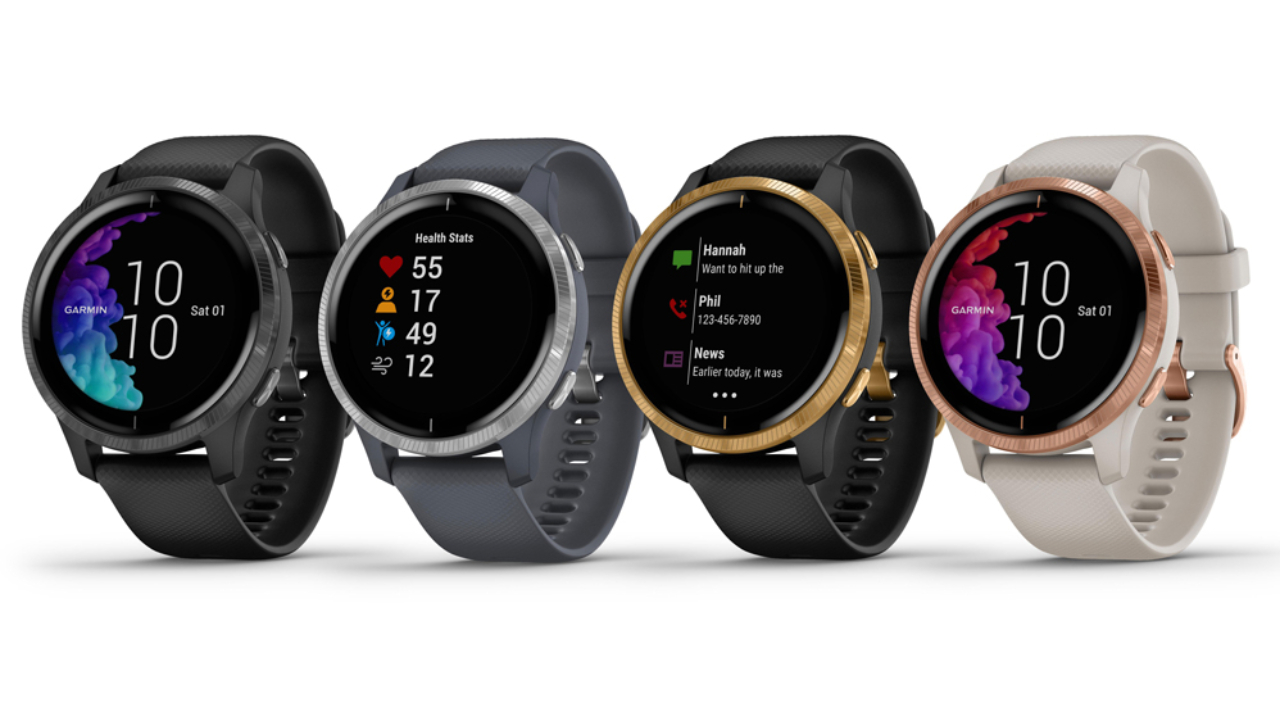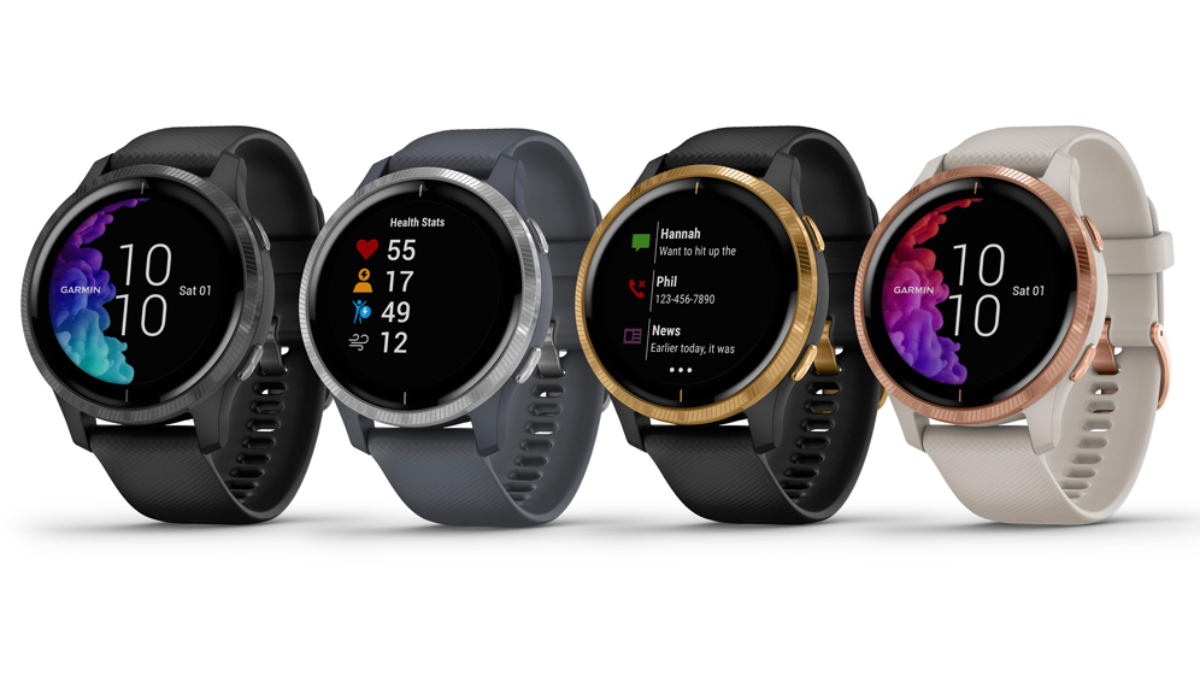Our Verdict
While the quality of Garmin’s sport tracking can’t be doubted, for one of its watches to truly go toe-to-toe with attractive smartwatches from the likes of Apple, Samsung and Fitbit it needed to up its aesthetic game. That’s where the Venu comes in, flashing its always-on AMOLED touchscreen in the hope of turning some heads. The screen is great, sure, but we still don’t know if that’s enough to justify the price of the Venu compared with other Garmins, and it also lacks smarts when measured against a device like the Apple Watch.
For
- Always-on AMOLED screen
- Excellent sports tracking
- Easy to use music features
Against
- Limited smart features
- ConnectIQ app store lacking apps
You can trust Coach
Should I Consider Buying Something Else?
The appeal of the Venu is simple – it has a nicer screen than other Garmins while offering most of the same great sports tracking features. The screen comes at a cost, however – not just in terms of money but also a shorter battery life. If you’re not all that fussed about it but are keen on Garmin’s top-shelf features, then the Vivoactive 4 (£259.99) is the obvious alternative, since it has all the same features bar the screen.
Especially keen runners looking around at the best fitness trackers would be better off going for the Garmin Forerunner 245 Music, which costs the same as the Venu. It has button controls rather than a touchscreen (making it easier to operate when you’re running and/or sweaty), better battery life, breadcrumb navigation and Garmin’s PacePro feature, all of which will appeal.
If the smartwatch features of the Venu underwhelm you, and they may well do, then the obvious alternative is the Apple Watch – the Series 3 is £199 and the new Series 5 is £399. Both offer far more in the way of apps, contactless payments and general usefulness, even if the sports tracking isn’t quite up to Garmin’s standard.
Garmin Venu In-Depth
Running With The Garmin Venu
Garmin has a raft of running watches available in its Forerunner range, all of which have the advantage of button controls in contrast to the Venu’s touchscreen, which can be tricky to use when sweaty or running in the rain. There are other additional features available on similarly-priced Forerunners too, but I’d still say the Venu offers a good run tracking experience, and one that’s certainly better than you’ll get from a Fitbit or Apple Watch.
You get four stats on a screen and accurate distance tracking through GPS (American), GLONASS (Russian) and Galileo (EU) satellites. You can also sync structured workouts and training plans to the Venu so it can guide you through them from your wrist.
Importantly, the screen is clear and easy to read when you’re out on the run, which isn’t the case with some watches when they switch to an always-on mode – Fitbit Versa 2, I’m looking at you.
The only real criticisms of the Venu I have when it comes to running is that there are no navigation features – not even breadcrumb trails, which is available on the Forerunner 245 – and I found the heart rate tracking lagged a little during high-intensity runs in comparison with a chest strap.
Sign up for workout ideas, training advice, reviews of the latest gear and more.
If running is your sport and the main reason you’re getting a watch is to track it, I’d still lean towards a Forerunner, but if you’ve been seduced by the Venu’s screen rest assured it’s also a capable running watch.
Working Out With The Garmin Venu

There is an impressive range of sports modes available on the Venu including golf and pool swimming, though notable in their absence are open-water swimming and triathlon modes. Garmin reserves those for pricier watches like the Forerunner 945, making it one area where it lags behind the competition – Polar, Suunto and Coros all offer triathlon watches for under £300.
Garmin has brought guided workouts to the Venu, however, and the animations are especially good on the watch thanks to its AMOLED screen. There is also a large variety of preset workouts you can sync to the watch, including strength sessions, and you can create detailed strength, yoga and Pilates workouts yourself, programming each exercise in Garmin Connect. In practice, this is such a long and tedious process that I can’t really imagine many people doing it regularly, especially when the preset workouts are readily available on the watch.
Activity Tracking With The Garmin Venu
For everyday activity tracking the Venu has a few new tricks up its sleeve, adding hydration tracking (where you log what you drink manually) and menstrual cycle tracking, as well as recording your breathing rate.

There’s also the Body Battery measurement (pictured, above), which is a simple score out of 100 that estimates your energy. This takes into account your heart rate variability (an indicator of physical stress), as well as the exercise you do and how well you sleep. It’s a helpfully simple overall measure, but I worry it’s skewed by Garmin’s often inaccurate sleep tracking (see Sleep Tracking below).
In general, however, the Venu does a great job of tracking your everyday activity and prompting you to move if you’ve been sedentary for long periods. You get both active and total calories and a weekly active minutes target, plus an estimate of your resting heart rate and VO2 max, both useful measures of your cardiovascular fitness.
I also like that you can set the step target to adjust automatically based on your past activity, which means that your daily goal is always an achievable challenge, rather than being so high or low that you ignore it completely.
Using The Garmin Venu As A Smartwatch
The music features on the app are the same as on other Garmins – you can store your own music on the device or sync it up with a streaming service if you have a premium account. Crucially, Spotify is supported by Garmin, so you can sync your playlists across to the Venu and listen to them offline, which you can’t do on the Fitbit Versa 2 or the Apple Watch. The Venu can also do this for Deezer or Amazon Music accounts.
However, this is pretty much the extent of the Venu’s smart features. You get notifications relayed from your smartphone, of course, and it will show the temperature, but there are barely any apps for the watch in the Connect IQ store – even Fitbit’s relatively meagre app offering outstrips Garmin’s, to say nothing of the massive Apple App Store and Google Play. You can make NFC payments using Garmin Pay, but only a few banks are signed up – Santander is the only high street bank that has partnered with Garmin in the UK, although third-party services which operate as pre-paid debit cards are available if you’re keen to use the feature.
The Venu is not all that smart, then – calling it a fitness or sports watch is probably more accurate. If Garmin really wants it to match up to the best smartwatches it will need to improve the app store in particular. However, the Venu will perhaps be able to compete simply on the strength of being a little bit smart and having Garmin’s native sports tracking, which is better than what’s available on all other smartwatches. And Spotify, of course.

Sleep Tracking With The Garmin Venu
The Venu is comfortable to wear at night and the battery life is good enough that you won’t need to be charging it instead of using it to track your sleep. When you wake up you can check out your sleep in the Garmin Connect app – the watch itself gives nothing away – where you’ll get a graph showing total time asleep plus the time in light, deep and REM sleep. You also get graphs showing your movement and respiration throughout the night.
Even when it works it’s a fairly basic offering compared with the depth of detail you get from a Fitbit or Polar watch, and I’ve consistently found Garmin’s sleep tracking overestimates my sleep across a range of watches, logging sleep when I was watching TV or reading and missing periods when I was awake in the middle of the night. If sleep tracking is one of the main reasons you want a tracker then it’s definitely worth considering the Polar Ignite or Fitbit Versa 2 instead.
How Often Am I Going To Have To Charge It?
Garmin has done well to stop the Venu’s improved screen having too much of an effect on battery life. It’s listed at five days in watch mode without the screen set to always-on, or six hours of GPS activity tracking while streaming music. I found that even with the screen set to always-on and tracking outdoor activities every day I could get three days from the Venu between charges, and with less frequent exercise four days would be the standard.
That’s partly because the screen goes into a low power mode that just shows the date and time when you're not looking at it. Turn your wrist and it flashes on, adding more colour and brightening up the watch face. Crucially, this feature worked every time on the Venu, in contrast to the Fitbit Versa 2, which I found hardly ever worked.
One very useful extra is the “do not disturb” setting, which turns the screen off entirely for a set period, only waking when you press a button. This saves battery and also means you don’t have an annoying light on your wrist when trying to sleep (or when your partner is trying to sleep).
However, while the battery life is good, it’s not as good as on the Vivoactive 4, which will last a day or two longer, or the Forerunner 245 Music, which offers 24 hours of GPS tracking and seven days in watch mode, though it’s also listed at six hours of music plus GPS. While the Venu’s screen doesn’t wreck battery life completely, there is a trade-off involved.
Where Can I Wear It Without People Laughing At Me?
The Venu is a good-looking watch, though it does stick out a little more from the wrist than the Apple Watch Series 5. The screen is obviously the star feature, and I’d be keen to see Garmin bring more watch face options to the Venu to take advantage of this. The Venu currently comes in four designs, which differ based on the bezel colour and strap, though you can buy alternative straps in a range of materials if you like. The cheapest Venu available is the blue band with silver watch at £299.99, with the other three designs all £329.99.

Nick Harris-Fry is a journalist who has been covering health and fitness since 2015. Nick is an avid runner, covering 70-110km a week, which gives him ample opportunity to test a wide range of running shoes and running gear. He is also the chief tester for fitness trackers and running watches, treadmills and exercise bikes, and workout headphones.

